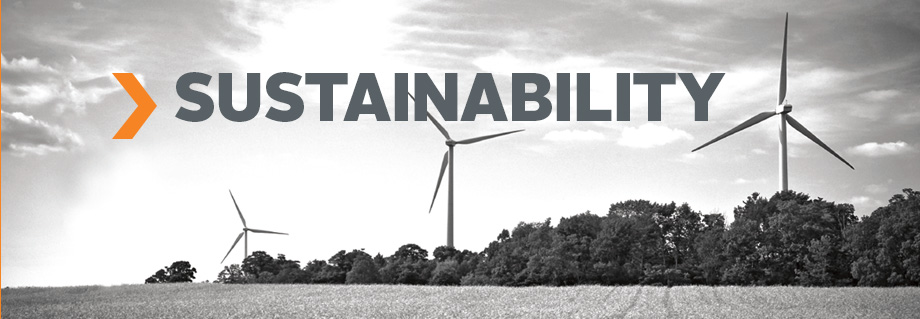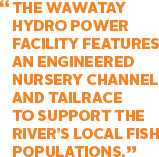
Capstone is committed to building a strong business while respecting the environment and communities where our businesses operate.

Workplace safety, and concern and respect for all employees and contractors, is a core value and objective of Capstone.
We strive to manage our business in the best interest of our shareholders while fostering a positive work environment for our employees and making a difference in the communities where our businesses operate. Integrating social and environmental considerations into our operations and culture improves the overall performance of our company by helping us to use resources more efficiently, enhance health and safety practices, increase capital efficiency, and nurture stakeholder relationships.
During 2012, we operated in compliance with all occupational health and safety and environmental regulations that pertain to our various businesses in Canada and abroad.
Health and Safety in the Workplace
Workplace safety, and concern and respect for all employees and contractors, is a core value and objective of Capstone. Our businesses have extensive health and safety practices as well as training programs to protect employees and encourage ongoing professional development.
Across our power businesses, employees received over 3,000 hours of safety training in 2012 on a range of topics, including handling and managing hazardous materials, working in confined spaces, first aid, fall protection, transportation of dangerous goods, vibration and relay training, and chemistry.
The power businesses also maintained a strong safety record, with Cardinal marking its 16th consecutive year without any lost-time injuries. While Whitecourt recorded one lost-time incident due to an employee’s repetitive strain injury, the facility is implementing a plan to minimize the potential for such injuries to occur in the future, including purchasing new tools and apparatus to more easily and safely lift heavy loads.
At our utilities businesses, employees received approximately 9,000 hours of training in various areas, including first aid, health and safety, and fire protection. In 2012, Bristol Water recorded six incidents of lost time due to an offsite traffic accident, three strain injuries, and two accidental falls. Bristol Water provided additional training to employees and promoted the company’s safety policies to improve skills and increase awareness of how to work safely. There were no incidents of lost time at Värmevärden.



Engaging with Our Communities
We strive to maintain strong relationships with each of our communities, including donating our time, skills, ideas and financial resources to help with many local initiatives.
Erie Shores offered financial aid and its employees volunteered at a fundraising event to support Port Burwell Public School’s breakfast program. Cardinal provided financial assistance to Cardinal in Bloom, an annual beautification program of flower baskets and gardens tended by volunteers that it initiated for the town of Cardinal. Cardinal also continued to provide the adjacent Benson Public School with free heat. Whitecourt donated funds to help implement a new local school program aimed at creating a positive classroom experience for students and encouraging them to stay in school.
Bristol Water distributed more than 35,000 water-saving items to help customers reduce water use, and worked with a local school to teach students and staff how to save water at home. Bristol Water also offers a number of leisure and recreational pursuits, including fishing, sailing and bird watching, at its lakes and reservoirs, enabling the local community to connect with and learn about nature.
At Capstone’s head office, corporate employees supported various local charities in 2012 by buying the right to dress casually every Friday.
Respect for the Environment
Our infrastructure businesses have an impact on resources such as water, energy and other raw materials. We endeavour to manage that impact responsibly and to enhance the local environment wherever possible.
Our renewable power businesses generate enough green electricity every year to power the equivalent of approximately 60,000 households.
The Sechelt hydro power facility maintains a salmon spawning channel at the facility by ensuring a constant supply of water and removal of debris. Similarly, the Wawatay facility features an engineered nursery channel and tailrace to support the river’s local fish populations. Notably, the Wawatay facility was the first hydro project partnership in Ontario with a First Nation community.
As a 167-year-old company, sustainability is embedded in Bristol Water’s culture and business strategy. Among other environmental initiatives, Bristol Water is working to reduce its carbon footprint by 50% by 2050, including encouraging its employees to cycle to work rather than drive, and minimizing business travel by using teleconferencing and web communication.
In addition, in 2012 Bristol Water outperformed the water industry average across a range of measures, including drinking water quality, leakage, supply interruptions, wildlife protection, waste management and pollution prevention.
Our Investment Process
We manage our environmental and social responsibilities throughout the investment process, which includes:
Review and evaluation of possible acquisitions
Our due diligence process includes a review of a business’s environmental as well as occupational health and safety (OH&S) risk management as part of our assessment of the broader risk management framework. This includes the use of independent experts to identify issues and obligations related to the investment.
Ongoing management
Each business maintains its own risk management system to manage its obligations and risks, which helps ensure compliance with regulatory requirements as well as timely identification and resolution of issues. Our ability to control or influence these frameworks depends on our level of ownership or control and the regulatory framework that governs specific environmental and OH&S risks.
Stakeholder reporting
Capstone reports annually to shareholders on how the company manages its environmental and social responsibilities.
